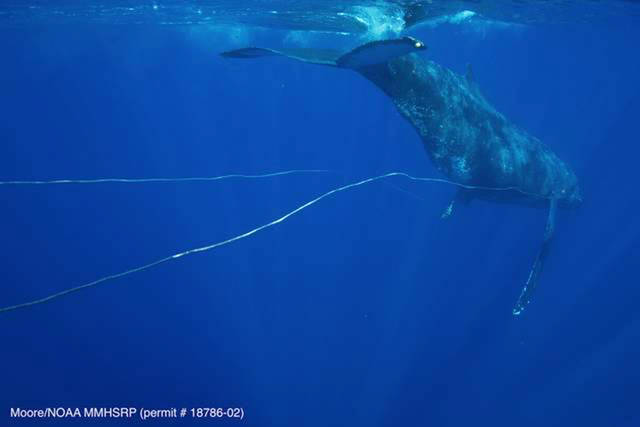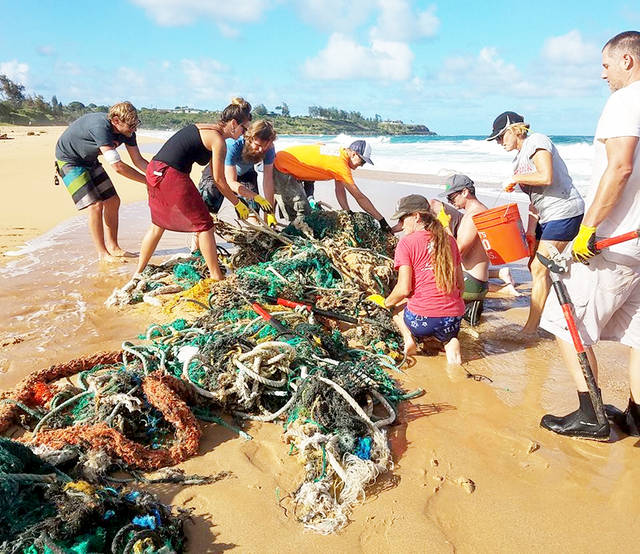KAPAA — There’s more haunting the humpback whale migration from Alaska to breeding grounds in Hawaii than shipwrecks — ghost gear also litters the 6,000-mile journey.
These lost or abandoned nets, lines and traps can get caught on migrating whales and other marine animals, causing drag and exhausting them or cutting into their bodies after becoming wrapped around tails or fins.
Dozens of organizations worldwide work to reduce ghost gear in the ocean and Surfrider Kauai has spent the last two years partnering with federal, state and nonprofit organizations to remove more than 369,393 pounds of marine debris from circulation.
The Hawaii Nei Marine Debris Removal Project just wrapped up and, since 2016 team members and volunteers have conducted 137 community cleanup events and 668 derelict net recovery patrols to remove line, plastic, nets and other debris from Hawaii oceans.
“For the past two years Surfrider Kauai has been collecting over five tons of marine debris monthly, mainly nets and fishing gear,” said Carl Berg of Kauai Surfrider.
He continued: “We are working with the Global Ghost Gear Initiative to reduce the amount of gear lost at sea and to find environmentally friendly ways of recycling the debris.”
The Hawaii Nei Marine Debris Removal Project was led by Hawaii Wildlife Fund on the islands of Hawaii and Maui; Surfrider Foundation on Kauai; and Pulama Lanai on the island of Lanai and funded through the National Oceanic and Atmospheric Administration’s Marine Debris Program.
That program got reauthorized in October when President Donald Trump signed the federal Save our Seas Act after it passed through Congress. The S.O.S. Act authorizes spending of $10 million per year through 2022 for removal of single-use plastics, fishing gear, net removal and other marine debris from beaches and the ocean.
Of the 369,000 pounds of marine debris collected since July 2016 from Hawaii’s coastlines, 28 percent was collected from Hawaii Island, 3 percent from Maui, 1 percent from Lanai, and 68 percent from Kauai. Of the total, about half, or 50.9 percent, consisted of ghost gear like nets and rope.
Of the total collected of the project, an estimated 44.4 percent (164,069 pounds) was diverted from local landfills via reuse, recycling and energy re-capture through the NOAA Nets-To-Energy Partnership and local or global art or research projects.
A blue whale statue in Bruges, Belgium was one of the art projects Hawaii Nei Marine Debris Removal Project was involved with. The life-size replication of the marine animal was made entirely out of recycled marine debris.
This two-year project included the efforts of 25,471 volunteer hours in addition to the help of local Hawaii business, which allowed the project to exceed its expectations — 35 total community cleanups and 84 total net patrols proposed.
Team members also collected over twice the goal of 54 metric tons of debris.
A collaboration will continue between Hawaii Wildlife Fund, Surfrider Foundation Kauai and Pulama Lanai via a new Marine Debris Removal Grant award from NOAA for a three-year project that began Oct. 1.



